Tech Note #11: Using Metric Halo interfaces with Pro Tools 9
By Allen Rowand
Revision 1.3 - May 30, 2013
With the release of Pro Tools 9, it's possible to use Metric Halo interfaces directly with Pro Tools - this gives you access to MIO Console, 2d, +DSP and our conversion without any other hardware. This technote will help you get the most out of your interface and PT9.
I/O SETUP:
There are several ways to configure the MIO Mixer for use with Pro Tools; let's look at a few.
Inputs:
In MIO Console, route your analog or digital inputs to Firewire channels:

In the example above, the eight analog inputs of the LIO-8 are routed to FW channels 1-8. Since we've used the direct outputs after the inserts, You can record into Pro Tools with your DSP effects. If you use the direct outs before the inserts, any DSP effects won't be recorded. This would allow you to record the "dry" signal, but put effects like MIOStrip in for the performers' mix!
If you want to work with stereo inputs, simply create stereo channels instead of mono or use a combination of both. You can also route busses from the MIO Mixer into Pro Tools via the Firewire channels.
In Pro Tools, open the "I/O" window in the "Setup" menu and go to the "Input" tab:

We've created eight input paths and set them to channels 1-8 from the LIO-8. You can also create stereo input paths to match your MIO Mixer setup if you're working that way.
Inserts:
You can use the routing flexibility of MIO Console to configure several different kinds of insert with Pro Tools. Start by opening the "I/O" window in the "Setup" menu and go to the "Insert" tab:
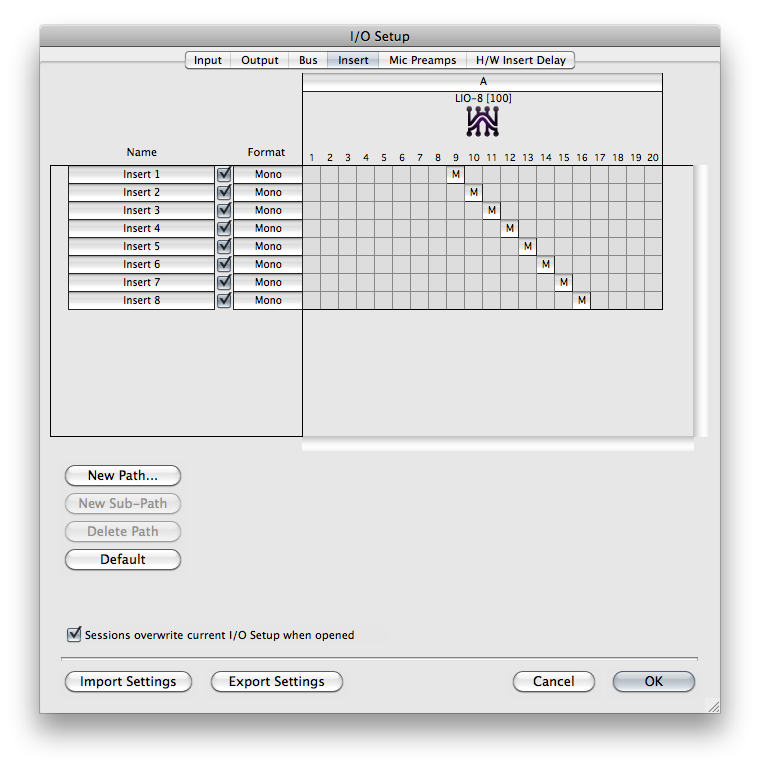
Define as many inserts as you need and map them to the inputs and outputs of your interface. In this example, we've created eight inserts and assigned them to I/O 9 to 16 so that they don't conflict with the input channels.
Now we'll configure MIO Console.
Analog/Digital Inserts:
To use the analog and digital I/O of your interface as insert points, set up your Pro Tools I/O as above and configure the MIO Mixer:

Create a DAW channel for each insert send and assign the post-insert direct out to an analog or digital output. Assign the channelstrip to your monitor bus (so that the meters will be active) and make sure to mute it.
Next create an analog or digital input channel for each insert return and assign the post-insert direct out to a FW channel. Assign the channelstrip to your monitor bus (so that the meters will be active) and make sure to mute it.
If you're using analog outputs 1&2 for monitoring, you can use the other 6 analog outputs for sends.
You can also insert whatever processing you want in the send or return channels to pre or post process your hardware inserts!
Back in Pro Tools' mixer, put an I/O insert in the desired channelstrip. The send from Pro Tools will go out the DAW channel in MIO Console, be processed, and then return to Pro Tools over the FW channel. Since we muted the channel in MIO Console, you won't hear the audio there but will hear it after it gets routed back into Pro Tools.
In this scenario, Pro Tools' delay compensation will be accurate.
DSP Inserts:
Using your 2d and +DSP effects via the I/O insert is a great way to integrate your interface's processing into your session. Add the insert paths to your session's I/O setup like we did for analog inserts and create the corresponding routing in MIO Console:
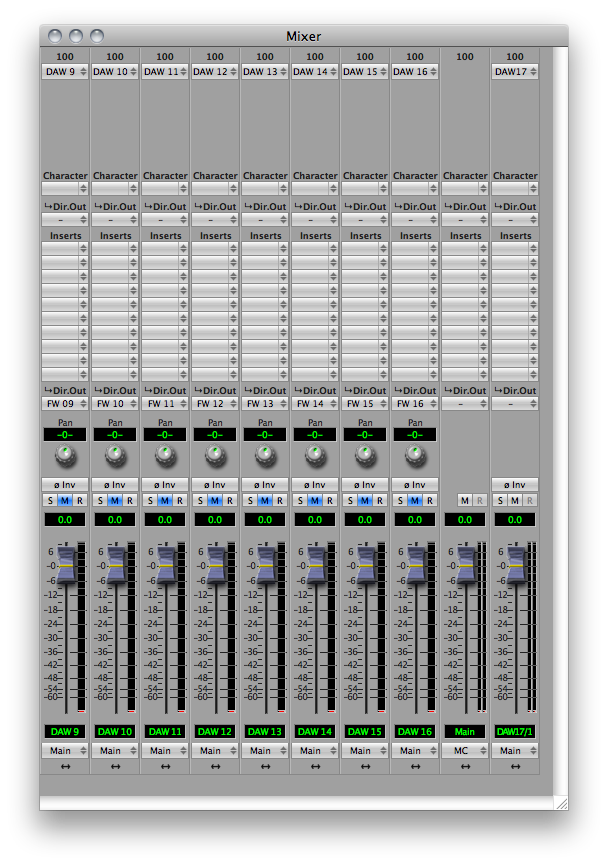
Create a DAW channel for each insert send and assign the post-insert direct out to the corresponding FW channel. Assign the channelstrip to your monitor bus (so that the meters will be active) and make sure to mute it. Insert whatever processing you want in the inserts.
Back in Pro Tools' mixer, put an I/O insert in the desired channelstrip. The send from Pro Tools will go out the DAW channel in MIO Console, be processed, and then return to Pro Tools over the FW channel. Since we muted the channel in MIO Console, you won't hear the audio there but will hear it after it gets routed back into Pro Tools- just like it was an outboard piece of gear.
DSP Insert Latency
One thing you need to be aware of when you use DSP inserts this way is latency. Pro Tools calculates its delay compensation using a value that the MIO driver reports. However, this value reports the latency of the DSP and A/D/D/A conversion. If you're not using an analog device, Pro Tools will not compensate properly- but there's an easy way to adjust this:
Go to the bottom of the channelstrip in Pro Tool's Mix window and show Delay Compensation:
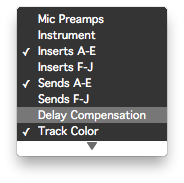
On every track that you use a DSP insert, add:
Your delays will now be delay compensated properly.
Stereo Mix:
One way to work with your outputs is to create your stereo mix using Pro Tools' mixer. To do this, go to the "Session I/O" in Pro Tools and go to the Output tab:
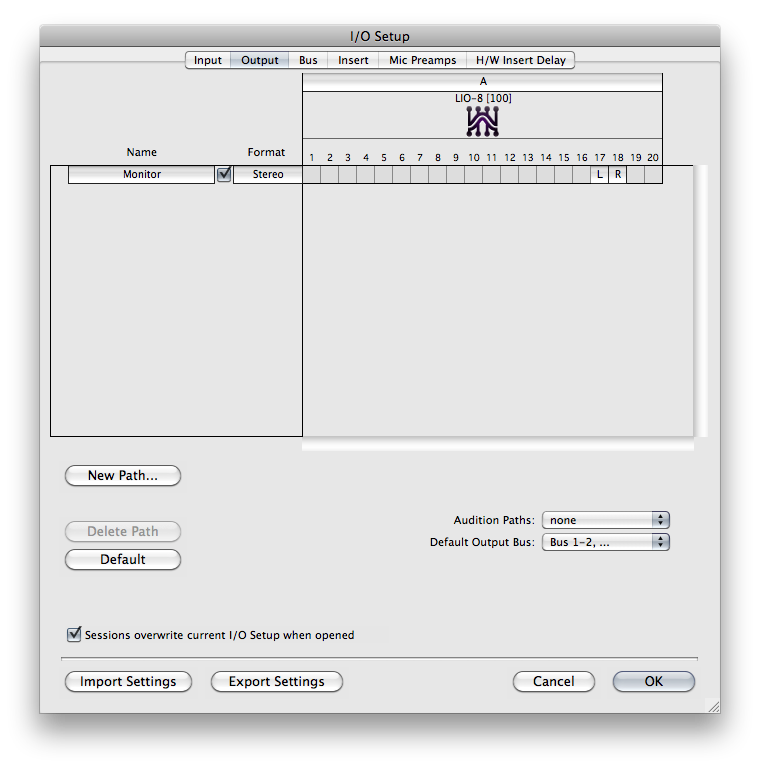
In this example we've put the monitor output to the MIO Mixer is on DAW 17/18; this way the first 16 DAW channels are available for inserts and other uses.
Stem Mix or "Summing":
Another method to work with your outputs is to create your stereo mix in the MIO Mixer and use Pro Tools for playback and volume automation. To do this, go to the "Session I/O" in Pro Tools and go to the Output tab:
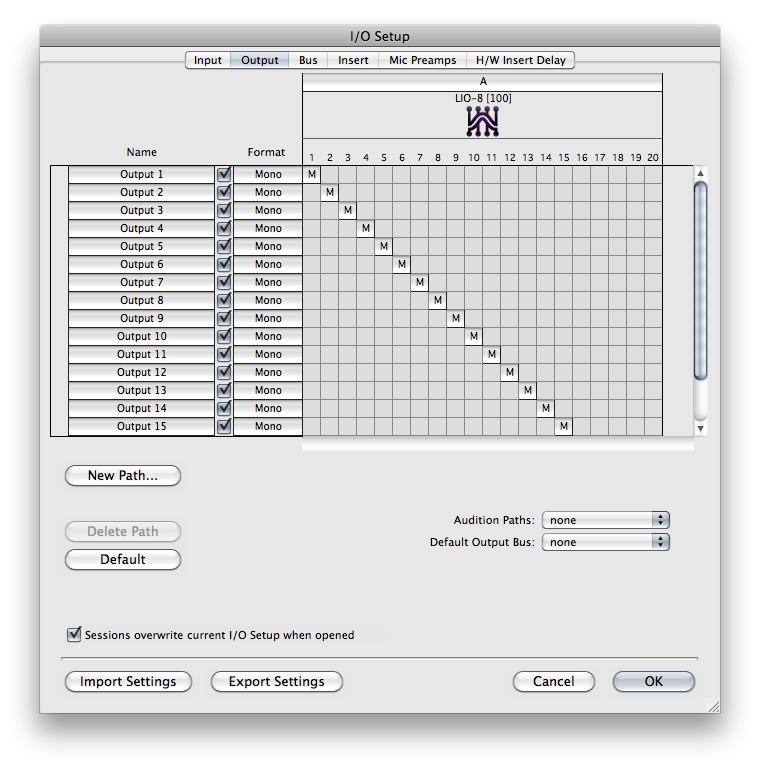
Create 16 mono outputs and map them to DAW 1-16 in MIO Console:
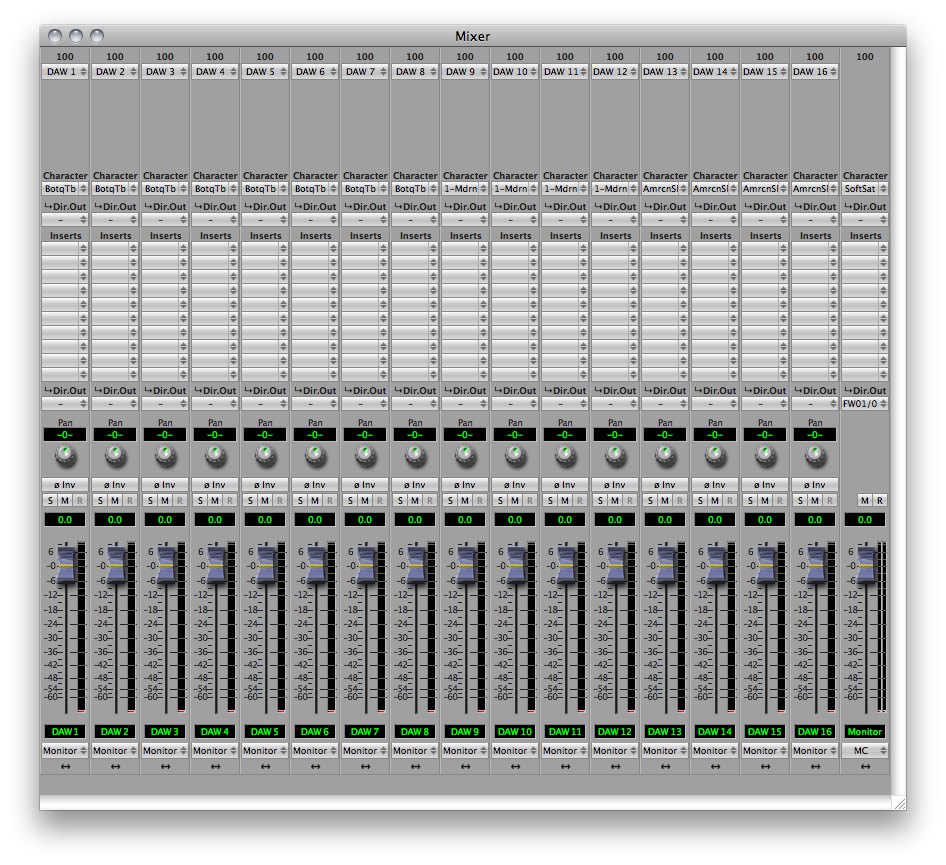
The 16 DAW channels from Pro Tools are routed to a stereo bus. Every channel and bus can have Character, our exclusive analog emulation. You can use it to "heat" up your mixes!
The stereo bus is routed to FW 1/2, which will send it back onto Pro Tools. This will allow you to record the stereo master back into the session.
ConsoleConnect:
The ConsoleConect plug-in integrates the MIO Console environment into your Pro Tools session, giving you complete recall of the Metric Halo environment within Pro Tools. All of your mixer, routing mix and DSP settings are stored as RTAS presets which can be recalled from Pro Tools.
Here's an example of one way to use ConsoleConnect: create a mixer layout that has all your inputs set up for recording and save it as a ConsoleConnect preset. Then change your routing so that you can reassign those inputs as insert returns for mixing and save that as another preset. Now you can quickly switch between tracking and mixing with a single click in Pro Tools.
ConsoleConnect can be run in two modes:
- Conduit:Pro Tools and MIO Console run as two separate applications (as they normally would). To make an adjustment in MIO Console, you have to switch out of Pro Tools.
- Plug-in: MIO Console runs as a plug-in inside MIO Console. You can adjust MIO Console from inside Pro Tols, and all your PT key commands remain active. There will be a "MIO" menu added to the Mac menu bar to allow you to access MIO Console's menus.
The behavior is set in the application preferences in MIO Console.
To use ConsoleConnect, insert it once per session on any channel; it's in the "Wrapped" plug-in category.
AGGREGATES AND MULTITRACK:
Pro Tools has a few things to be aware of when working with multiple interfaces:
- You are limited to 32 I/Os
- They are always the first 32 channels of any device or aggregate
- Metric Halo interfaces provide 18 channels of I/O between the computer and the interface; on LIO-8 and ULN-8 interfaces, channels 19/20 are reserved for timecode and do not transport audio
Given these limitations, how can you record and playback 24 tracks? It's not difficult with a little configuration. Let's say you wanted to use 24 channels of ULN-8:
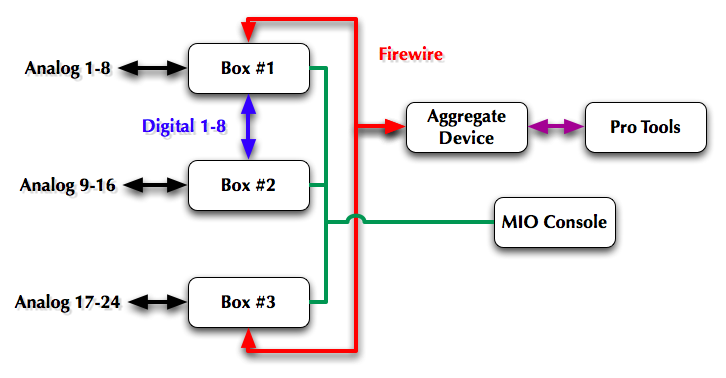
- Analog I/O 1-8 are on box #1, which is the first box of an aggregate. These should appear as FW 1-8 in the aggregate.
- Analog I/O 9-16 are on box #2; this is connected to box #1 over AES and is not part of the aggregate. In box #1, the AES channels would be sent to FW 9-16 via the direct outs.
- Analog I/O 17-24 are on box #3, which is the second box of an aggregate. These should appear as FW 21-29 in the aggregate.
Revision History:
- Revision 1.0 - December 14, 2010 - Initial Release
- Revision 1.3 - May 30, 2013 - Revised to remove warning re: ULN-8/LIO-8 bug in Pro Tools' Session window, as it has been fixed in version 10.3.5 and higher.
|
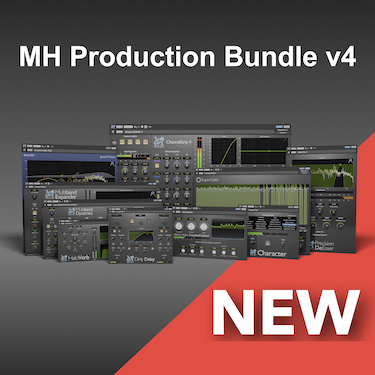
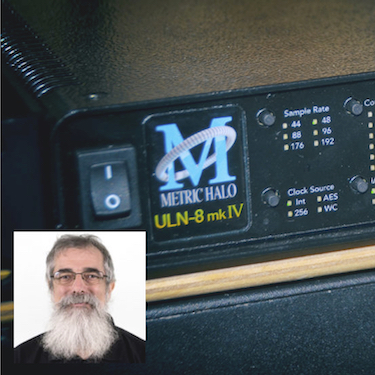


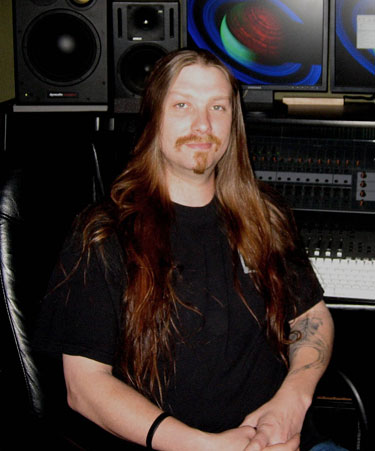


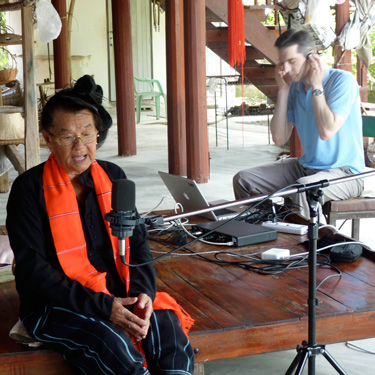


 Tutorials
Tutorials









